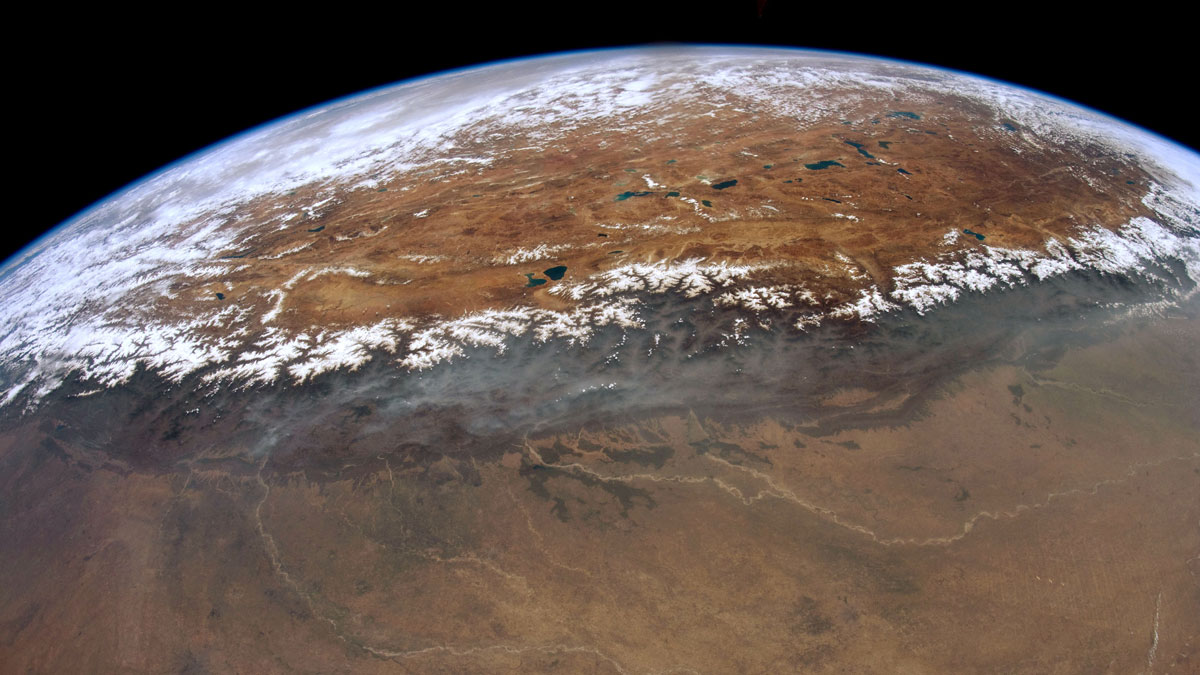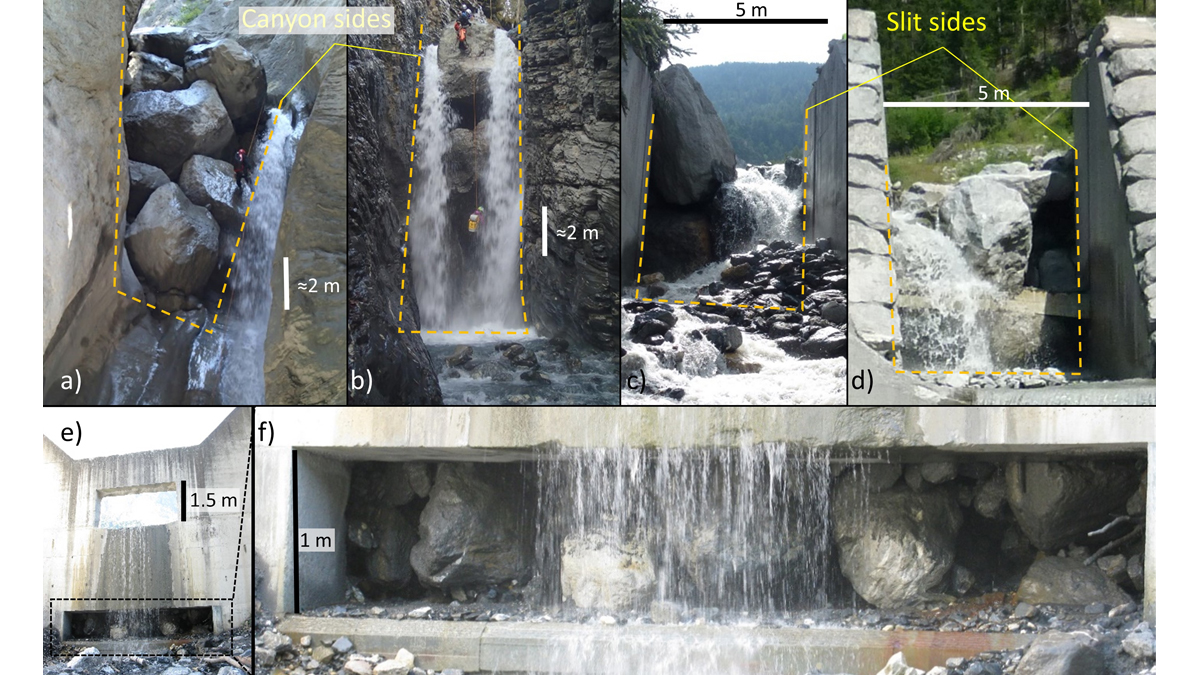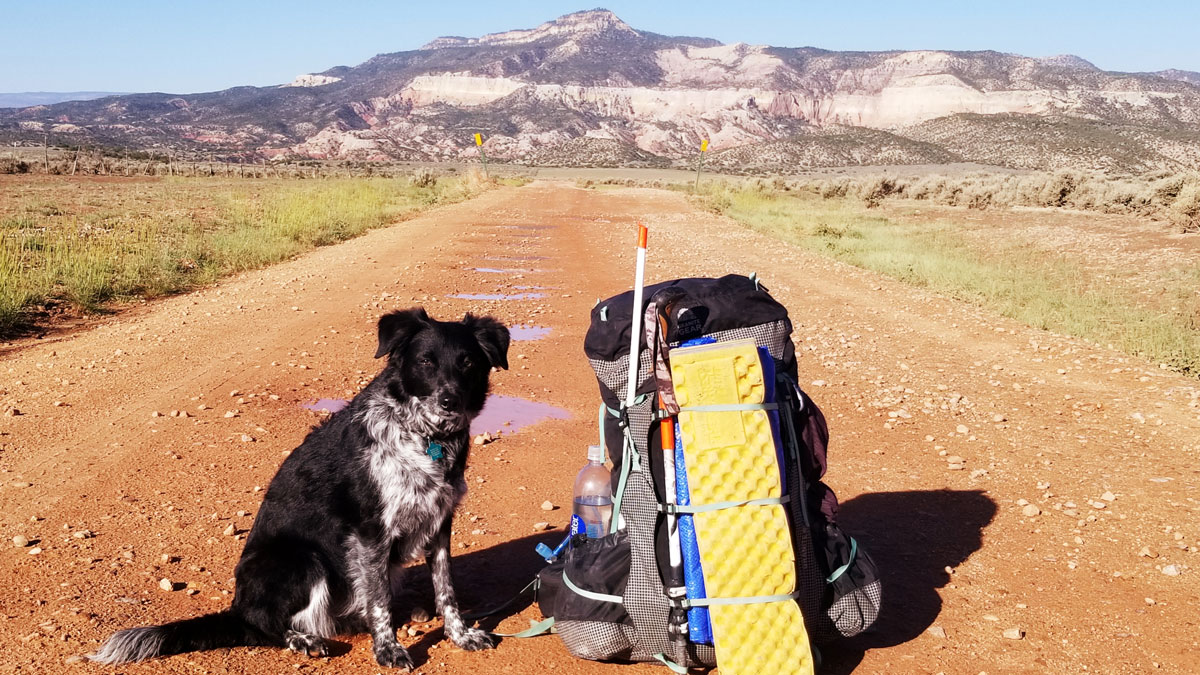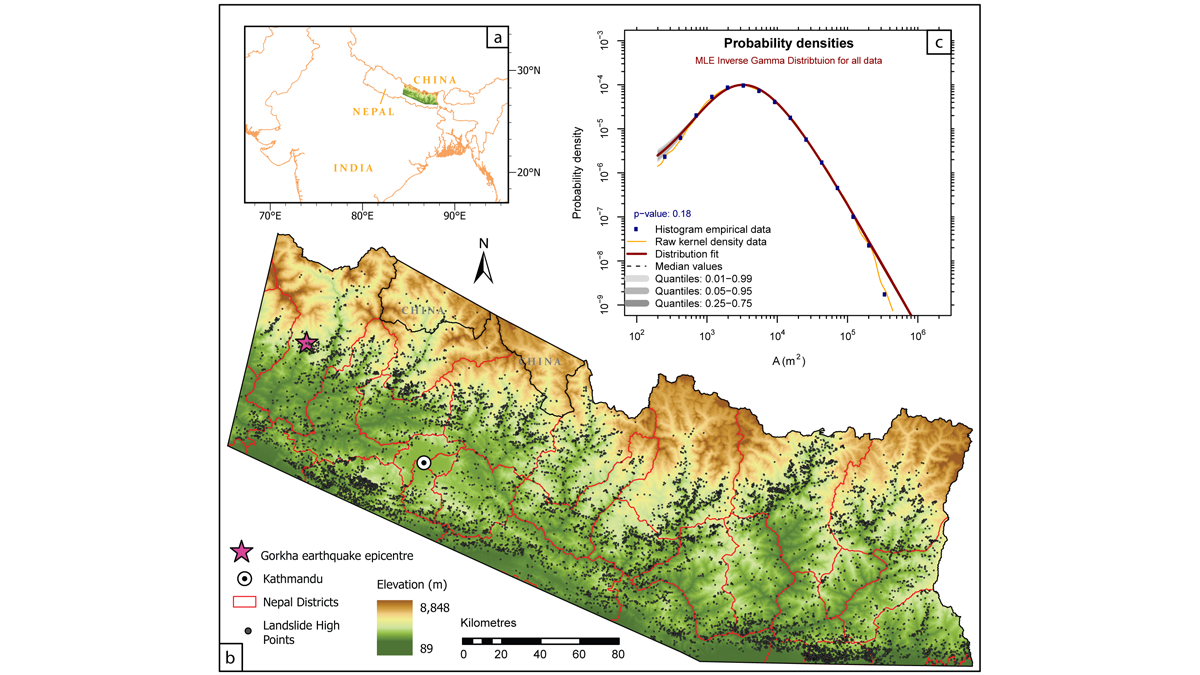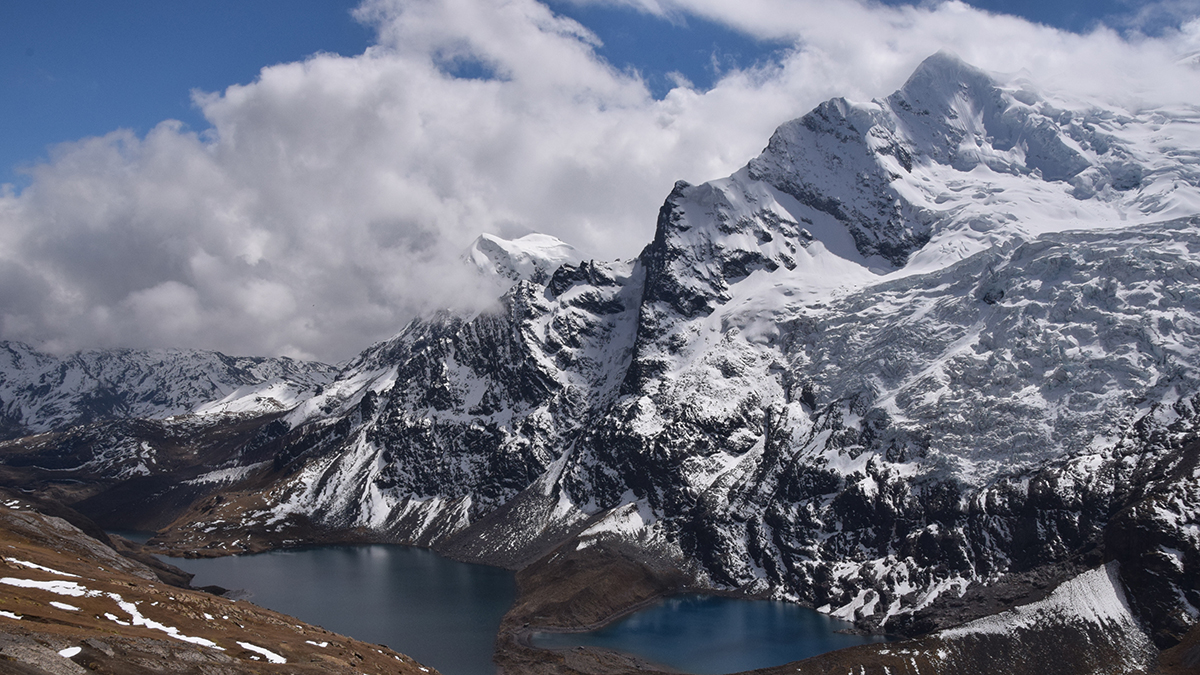Using thermokinematics, researchers have found that crustal accretion along the megathrust at mid-lower crustal depths shapes plateau growth and regional drainage development.
mountains
Kimberley Miner: Preserving Earth’s Biodiversity and Integrity
From Antarctica to the Arctic, Miner’s career as a climate scientist has taken her to Earth’s frozen areas to study the effects of climate change.
Steep Mountain Slopes Have Surprisingly Long Lifetimes
New models of eastern Tibetan hillsides show that steep slopes with “excess” rock last longer on average than their shallower counterparts.
Good or Bad Jam? Modeling Boulders’ Fate at Constrictions
A new modeling framework to assess the likelihood of jamming at constrictions can be used to support the design of effective mitigation measures and reduce risk in debris flow prone areas.
Mountains Undergo Enhanced Impacts of Climate Change
As climate change persists, amplified temperature increases in mountains and changes in precipitation will diminish snow and ice.
Incredible Journeys on the Crown of the Continent
Living in Geologic Time: The making, breaking, and backpacking of North America’s Continental Divide.
History Matters When Gauging Hillslope Susceptibility to Failure
Using susceptibility models to forecast the potential locations of landslides is a key tool in mitigating landslide hazard, but are existing approaches appropriate in dynamic mountainous settings?
Mountains Sway to the Seismic Song of Earth
The Matterhorn in the Swiss Alps is in constant motion, gently swaying back and forth about once every 2 seconds.
High Mountain Rain Has Scientists Rethinking River Basics
Rainfall varies with elevation, and such precipitation gradients can have profound and often counterintuitive effects on topography.
Adapting to Receding Glaciers in the Tropical Andes
Integrated approaches are needed to understand and respond to changes in tropical mountain ecosystems and communities brought about by receding glaciers and changes in land use.

